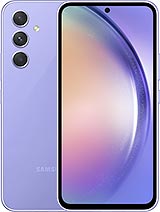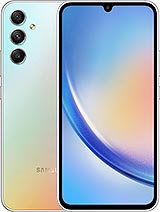Xiaomi Redmi Note 13 Pro 4G review

MIUI 14 on top of Android 13
The Redmi Note 13 Pro 4G runs MIUI 14 on top of Android 13. All Redmi Note 13 models will get an update to HyperOS later on. So far, there is no word on the promised update support, but we guess it will be the same as on the Poco X6 models - three years of major Android updates and an extra year with security patches only.

Some of the most notable MIUI 14 features include the native text recognition in the Gallery app, easier Xiaomi smart devices management through Smart Devices, enlarged home screen folders, the ability to uninstall most system apps, and incredibly optimized CPU, GPU, and memory usage.
The home screen, recent apps and general settings remain unchanged. The app drawer is enabled by default but can be disabled, unlike the Poco version. We like the search bar at the bottom of the screen for easier reach. There are custom and preset app categories for faster navigation.








Home screen, recent apps, settings menu, app drawer
The split between a notification shade and Control Center is enabled by default, and that's probably a good thing. We found it to be quite convenient. In case you are not a fan, you can always revert back to the standard notification shade with quick toggles in one place.


Control center and notification panel
Unlike the standard recent apps menu, MIUI's one lists the apps in a vertical arrangement (you can switch to the standard horizontal alignment) and provides several useful shortcuts. That's where you can open up apps in floating windows. However, you can keep up to two apps open at a time. In case you want a faster shortcut to apps that support free-form windows, just enable the Sidebar.
The sidebar becomes Video Toolbox in video player apps such as YouTube. It essentially contains the whole Sidebar functionality, but besides options for floating windows, it contains shortcuts for Screenshot, Record screen, Cast, and Play Video with the screen off, which works on YouTube, no Premium subscription is required. But, as we mentioned, you need to whitelist the apps in advance where you want the feature enabled.
Themes have always been a huge part of MIUI, and they are available on MIUI 14, too. You can download new ones from the Themes store, and they can change wallpapers, ringtones, system icons, and even the always-on display style.




Themes and other customization options
Of course, Always-on display customizations are also available in addition to the presets. To our surprise, there's no true Always-on display functionality, as it can only be shown for 10 seconds after tapping on the locked screen. It's not "always on".
The notification effect lights up the edges of the display when new notifications come in, but there's little customization other than a couple of different colors and a 'Starlight' option. This effect can work with or without the AoD. Disappointing.
Moving on to privacy and security, MIUI has a pre-installed system Security app. Aside from the additional malware protection layer it provides, the app holds many of the app settings and privacy features in one place. It can manage your blacklist, manage or restrict your data usage, configure battery behavior, and free up some RAM. It can also manage the permissions of your installed apps, define the battery behavior of selected apps, and apply restrictions only to certain apps.
All in all, MIUI 14 has changed little over the 13th iteration in terms of overall user experience, and that's not bad. It's just as snappy and customizable as ever. Xiaomi has paid special attention to the haptics of this unit as well - we found the motor to be crisp, strong, accurate, and responsive. It reacts to many actions across the system and when navigating. There's even a haptic feedback intensity if you find it obtrusive or not strong enough.

Finally, there are some ads, but most can be stopped from within the Settings in the app that shows advertisements and/or recommendations.
Performance and benchmarks
The Redmi Note 13 Pro 4G employs the MediaTek Helio G99 Ultra chipset, just like the Poco M6 Pro. It is a special variant of the chipset - MT6789G. It joins a fairly long list of known modifications of the Helio G99 - MT6789, MT6789V/CD, MT8781V/CA, and MT8781V/NA. We are not sure exactly what denotes this particular chip as "Ultra" or what makes it different.

From what we can tell from a combination of spec sheets and the review unit, the Helio G99 Ultra still uses a 6nm TSMC manufacturing process. It is also still rocking two ARM Cortex-A76 "big" cores, clocked at up to 2.2GHz and another six "small" Cortex-A55 CPU cores, working at up to 2.0 GHz. Nothing has seemingly been changed on the GPU front either, where the chipset gets a modest Mali-G57 MC2 GPU.
The Redmi Note 13 Pro 4G is available in two memory configurations at the time of writing: 8GB/256GB and 12GB/512GB. Storage is expandable via the microSD slot. RAM works at LPDDR4X speeds, while the storage chips are UFS 2.2.
And now, it's time to run some benchmarks.
Even without a Prime core, the Redmi Note 13 Pro offers a very capable processor, as the performance tests show.
The Helio G99 CPU is on par with the Snapdragon 695's, the one behind the Redmi Note 11 series. Not great, not bad.
The GPU is absolutely adequate for the mid-range and should do just fine for most games.
Same goes for the GPU - if you are okay with 2-years old midrange performance, which still gets the job done outside heavy games - you will be fine.
The AnTuTu tests put the Redmi Note 13 Pro 4G around the Redmi Note 12 5G, Poco M6 Pro, the Moto G84 and the Galaxy A24.
Finally, the stability tests show no throttling - 94% of CPU stability and 99% for GPU stability!
Overall, the Redmi Note 13 Pro 4G offers good performance on a budget, and non-gamers should find it adequate for a daily driver.
Reader comments
- Awais
- 12 Jan 2025
- 6Pu
No
- Anonymous
- 20 Nov 2024
- uRB
I am using it since almost 4 months now. Overall performance is I can say very good except Battery timings . 67W charger is excellent not over all backup is pathetic specially when Brightness is full or even it's high. 200MP Camera doesn't ...
- Anonymous
- 29 Oct 2024
- gE$
Hi, Is "Vlog mode" included in this model?



























